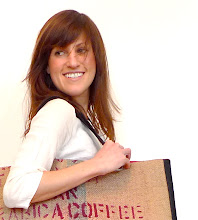My morning's experiment...playing with paper and pink thread.
What do you see?
1.21.2011
1.19.2011
The start of something new-ish.
Today was the first class of a new semester. After ten years of teaching, rituals, performed with every incoming class, have emerged. One of which, taken straight from the Napoleon, Washington and Roosevelt playbooks, is that of learning each student's name. I methodically call each name, stare at the human associated with this word for what seems like too long and repeat until I have all the names committed to memory.
It sounds creepy, but in fact it's quite funny. It's like the ice breaker that no one saw coming, and at the end of our four hour studio I'm not the only one who knows everyone's name. We all do.
What better way to start something than to feel like you are already a part of it?
(Photo courtesy of here)
It sounds creepy, but in fact it's quite funny. It's like the ice breaker that no one saw coming, and at the end of our four hour studio I'm not the only one who knows everyone's name. We all do.
What better way to start something than to feel like you are already a part of it?
(Photo courtesy of here)
1.13.2011
An addition is born.
As the title of this post suggests, we designers often think of projects as our "little children". From the moment we meet with a client until the day a line on paper become a wall in space, we love them and nurture them as we would a child. And like children, they require all our attention, keep us up at night, and in no way can fend for themselves. But, each step in the process is another step closer to becoming the freestanding project that lives in the world contributing to society independent of it's creators.
As the say goes, "It takes a village...". You know the rest. This saying also applies to a fledgeling design project. There are the parent architects, the cousin interns, the aunt structural engineer and the cranky great grandfather contractor that hates the entire family on principle.
In the coming months I (and my wonderful intern Lisa) am working on an addition to a house for a lovely couple with two children of their own. My little creation will help this family live a life with a bit more elbow room. Seemingly a simple problem, there are many things to consider. The first order of business on the proverbial design table is scale and form.
In the photos above a soldier row of models sits obediently waiting to be tested in context.
There is also never a shortage of drawings, lovingly crafted by hand to ensure the relationship between parent and child is as direct as it can be.
I love the design process and the idea that I can create something from almost nothing, take care to delicately help it evolve and grow, and then see it standing in the world on it's own foundation.
As the say goes, "It takes a village...". You know the rest. This saying also applies to a fledgeling design project. There are the parent architects, the cousin interns, the aunt structural engineer and the cranky great grandfather contractor that hates the entire family on principle.
In the coming months I (and my wonderful intern Lisa) am working on an addition to a house for a lovely couple with two children of their own. My little creation will help this family live a life with a bit more elbow room. Seemingly a simple problem, there are many things to consider. The first order of business on the proverbial design table is scale and form.
In the photos above a soldier row of models sits obediently waiting to be tested in context.
There is also never a shortage of drawings, lovingly crafted by hand to ensure the relationship between parent and child is as direct as it can be.
I love the design process and the idea that I can create something from almost nothing, take care to delicately help it evolve and grow, and then see it standing in the world on it's own foundation.
Labels:
architecture,
models,
process,
sketching
1.05.2011
To swatch or not to swatch?
I have, for some time now, thought a swatch card a very useful little device; tiny pieces of fabric all lined up in a row for your viewing and choosing pleasure.
So, when I set out to create swatch cards for MAKE.GOOD studio I asked myself the following questions:1. What is the convention for organizing fabric swatches?
2. How would I organize fabric swatches?
3. How might this card be useful to a client?
A quick study of the above questions provides a bit of insight into my way of thinking about any design problem. I think about what has been done before, my own, unbiased thoughts about how things are done, and then how the user may want to see things done.
At the end of the day, after much consideration, the answer was right in front of me on the shelves of my studio. You see, I organize my fabric by type first and second by how major a player it is in the collection. The result is four categories, wool, linen, cotton, specialty. The result, it turns out, is intuitive...to me and hopefully to everyone.
Regardless, it is so satisfying to see all the pretty colors gathered together, organized and ready to be picked.
Ok, so it was also a ton of fun naming the colors. Petra is my favorite. Can you find it, and do you know why it's called Petra? (and don't cheat and use the internet to find the answer)
Subscribe to:
Comments (Atom)
















